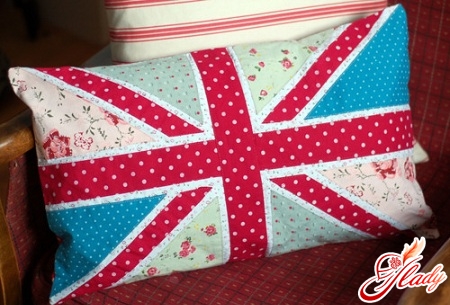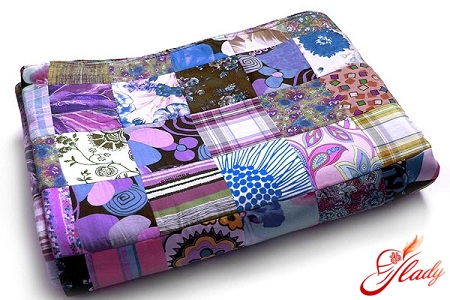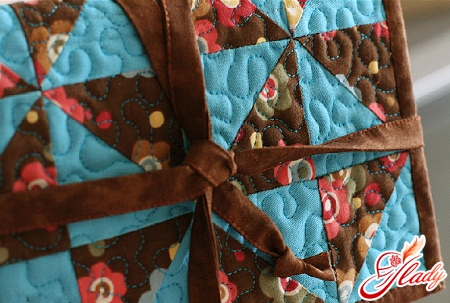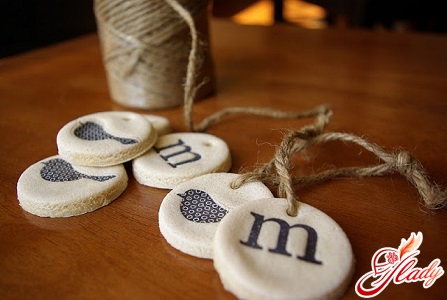 It's always difficult to start.But any needlework must first be learned. It is only later, when you become an experienced craftswoman, that needlework creativity begins to bring pleasure. But at first... And not everything works out right away, and your hands do not obey yet, and your eye fails. Yes, you never know what difficulties a novice needlewoman may encounter! But, fortunately, the experience of their predecessors is always there to help beginners. And when mastering, for example, patchwork, you must definitely take this experience into service. We offer you a small selection of tips and secrets from the category "patchwork for beginners".
It's always difficult to start.But any needlework must first be learned. It is only later, when you become an experienced craftswoman, that needlework creativity begins to bring pleasure. But at first... And not everything works out right away, and your hands do not obey yet, and your eye fails. Yes, you never know what difficulties a novice needlewoman may encounter! But, fortunately, the experience of their predecessors is always there to help beginners. And when mastering, for example, patchwork, you must definitely take this experience into service. We offer you a small selection of tips and secrets from the category "patchwork for beginners".
Preparation for work
The key to success in patchwork is precision andaccuracy. Therefore, it is necessary to make patterns of parts as accurately as possible and sew these parts very carefully. All fabrics require preliminary processing, which is called decatizing. The fabric is first soaked or washed, then dried and ironed well. After that, the fabrics are sorted by color and they begin to make templates. Templates are cut out according to the shape of the future part, taking into account seam allowances. They are made of cardboard or thick paper. To maintain precise dimensions, graph paper is glued to the cardboard, and then the desired figure of the required size is cut out of it. For curvilinear templates, longitudinal cuts-notches are made on the outer contour, which makes it easier to mark the seams when connecting the parts.
Choosing a Pattern
Of course, the greatest satisfactiondeliver patchwork items made from complex patterns. For such masterpieces, colorful fabrics or materials of contrasting colors are used. However, it is best to start with the simplest designs, choosing tried and tested patterns. How to choose a pattern? There are three main types of items made using the patchwork technique.
- Cloth, collected directly from the flaps. In this case, small pieces of fabric are joined together, the seam in the seam. The flap can be either of the correct geometric form (traditional patchwork), or arbitrary (Crazy-patchwork).
- Quilted products (quilting), sew from a whole piece of fabric. In this case, the pattern is created using stitches.
- Application. In this technique, pieces of other tissue are placed on the main tissue, sewed or quilted.
The pattern can be made from one repeating piece.(figures). Traditionally, a paper template is cut out for each piece, and then the fabric is basted to the paper. After that, the seam allowance is folded over the edge of the template and basted again by hand. This is an old English method, which is considered one of the very first patchwork techniques. But there is also a less complicated, more modern and popular (especially in America) technique. This is the technique of working with blocks. Triangular or rectangular (usually square) pieces of fabric are sewn into blocks, folding them into a geometric pattern. The simplest blocks are made up of a small number of large pieces. Such patches are easier to sew, and their production takes less time. The names of the blocks depend on the number of pieces from which they are sewn:
- The nine-piece block is made up of nine squares,
- The five-piece block is made up of twenty-five squares,
- The four-part unit includes four to sixteen parts.
In addition, the technique is quite widespread.patchwork sewing from strips. It is similar to the technique of sewing from blocks, only the flaps are first collected into strips of one piece wide, and then these strips are sewn into a canvas. Both of these techniques (blocks and strips) are more convenient, since the flaps are immediately stitched together on a sewing machine. In crazy patchwork, the flaps are connected according to the applique principle, when individual small pieces of fabric of arbitrary shape are applied to the whole canvas and sewn to it. In this case, the product is two-layered. However, more experienced craftswomen use the single-layer canvas technique in crazy patchwork.
Working with iron
Ironing in patchwork is one of the necessarytools. During the work, the seams must be smoothed out, and when preparing the fabrics for work, they also need to be ironed. Finished patchwork products are ironed only from the front side and always in one direction. The seams are also ironed in one direction, as a result of which they become stronger, and their edges do not crumble. Seam allowances are ironed only from the inside, so that there are no ironed marks left on the front side of the product. When working with complex blocks with multidirectional seams, the allowances of the first row are ironed in one direction, and the allowances of the next - in the opposite direction. From the front side, the fabric is ironed at the intersection points of the seams. Long strips of patches are placed on the ironing board not horizontally, but vertically (perpendicular to the board). With this method, the strips do not wrinkle or stretch. Particularly dense fabrics are moistened before ironing or an iron with a steamer is used for this. Fabrics must be ironed along the grain and at a temperature appropriate to the type of fabric.
Cutting rules
For cutting, it is more convenient to use templates,made in the form of a frame. The inner side of the frame corresponds to the dimensions of the part in the finished product, and the outer side is identical to the size of the part with seam allowances. In fact, the width of the frame itself is the size of the allowances. When making a pattern, the frame is outlined on both sides, and the part is cut out along the outer contour. The line of the inner contour indicates the seam line. The pattern is applied to the fabric only with a pencil (chalk, soap), since traces of a ballpoint or gel pen can show through from the front side. The fabric is cut exclusively along the grain so that the stitched patches do not skew or stretch in the finished product. To cut out fabric patches, you can use regular scissors or a special roller knife (cutter). The cutter significantly speeds up the work process, allows you to cut off long strips at once, which can then be cut into separate elements: diamonds, squares, triangles. A roller knife is especially convenient when working with curved cutting lines.
Secrets of neat sewing
Carelessly stitched parts, uneven seams andEven millimeter differences in the sizes of identical elements can negate all previous efforts. Therefore, patches must be cut as accurately as possible and sewn flawlessly. Beginning craftswomen are advised to use only frame templates made with graph paper, and be sure to apply seam lines to the pattern. Before starting to sew the fabric, it is better to make a "test throw". That is, sew a block sample. This will allow you to check the accuracy of the cutting of the patches and adjust the settings of the sewing machine. All errors will be immediately visible on the sample, and you will be able to save time and effort by correcting errors only after trial sewing, and not in the middle of the process (when most of the fabric has already been assembled). In general, patchwork sewing must be approached thoughtfully. Incorrect color combinations of fabrics and, especially, sloppy work can ruin any product and forever discourage you from doing patchwork sewing. And needlework is interesting, exciting and fashionable. So don't be afraid to start, just follow the rules of patchwork sewing and don't neglect the experience you've already gained. And you'll succeed! We recommend reading:









